| |
|
|
|
|
|
|
|
|
|
|
| |
| |
 |
|
| |
田润德
编译文/图 2020-04-30
20:36 |
|
| |
|
|
|
|
| |
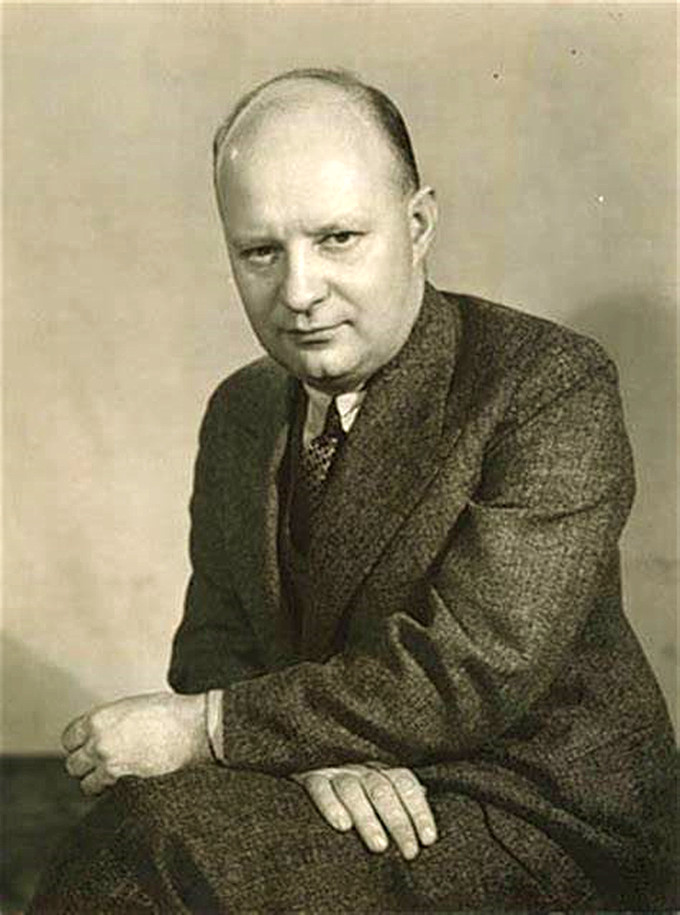 |
|
|
|
| |
保罗·欣德米特(Paul Hindemith 1895-
1963 ) |
|
|
|
| |
|
|
|
|
| |
阿拉贝拉·史丹巴克演奏欣德米特小提琴协奏曲
|
|
|
|
| |
Arabella stambach plays the hindemeter violin concerto
|
|
|
|
| |
|
|
|
|
| |
音乐历史上的今天
1940年4月30日,保罗·欣德米特(Paul
Hindemith)在耶鲁大学得到教职,他的作品在德国因为“堕落”和“文化布尔什维克主义”而遭禁。
德国作曲家,指挥,中提琴家保罗·欣德米特1895年11月l6日生于德匡哈诺的一个手工业主家庭。他九岁开始正式学习音乐。十四岁进法兰克福音乐学院,随A·门德尔松与B·西克勒斯学习作曲。曾任小提琴,中提琴师。1915年被任命为法兰克福歌剧院乐队长。1917年至1918年应征入伍。1921年起,创作出首批作品,以作曲家与中提琴家而闻名德国。l923年升任乐队指挥,同时创办“阿玛尔四重奏团”,介绍现代音乐,并亲任中提琴手。1927年起,,任担柏林国立音乐学院高级班作曲教授。纳粹执政时,由于对当时统治不满而辞职。1935年至1937年间,他接受土耳其政府的聘请到安卡拉去组织土耳其的音乐生活,提高土耳其的音乐。在纳粹统治期间,他的作品在德国被禁演。1937年至1939年他三次去美国旅行,并于1940年4月在美国定居,以后成为美国公民,在耶鲁大学等处任教。同时还在美国举行了一些巡圆演出。1947年他返回祖国。1951年接受了汉萨市的巴赫奖。l951年去瑞士,被任命为苏黎世大学的正式教授。1956年以后,他主要致力于乐队的指挥工作。1963年2月28日他在美因河畔法兰克福的(Mein-in-Frankfort)逝世。
欣德米特从青年时代起,就被作为现代音乐的重要代表之一。二十年代开始,这位才华出众的作曲家在德国已声誉卓著,不久就成了欧洲乐坛上的风云人物.在公众心目中,他是一个极端的现代主义派。他的老师都是晚期浪漫主义作曲家,而他却受到了德彪西、雷格尔音乐的深刻影响,这些在他早期或晚期作品中都流露无疑。随着第一次世界大战后音乐的革新,欣德米特的创作具有强烈的新古典主义倾向。他试图将巴赫时代或更古的音乐特点,溶于现代的风格之中,以抵抗感情冲动的晚期浪漫主义(晚期浪漫主义在二十世纪初仍是传统势力)。他虽然背离了传统的大、小调,却又不趋向于无调性与十二音体系,而是系统地发展了一套合乎逻辑的新对位法,提倡“线性对位”。这种新对位法的特点是,重视对位法的纹理,强调旋律的独立性交织,恢复自然音阶,但又不受到和声的限制。在这种对位法中,和声不再发生作用,其结果是一一种音的偶合,也就是说根本不是和声,所谓协和与不协和都不在考虑之列。欣德米特在他的四首协奏曲和钢琴练习曲等作品中运用了这些手法,以后又在《作曲的技巧》(Unterweisungin
tonsatz)一书中作了理论上的论证。 还推崇“实用音乐”,宣称在创作时“头脑中常常想到业余音乐爱好者”,强调音乐的实用目的。
欣德米特创作了许多室内乐作品,如小提琴奏鸥曲小提琴与钢琴协奏曲,小提琴与钢琴奏鸣曲,中提琴奏鸣曲、大提琴奏呜曲,大提琴与钢琴奏呜曲、,弦乐四重奏;钢琴、小提琴、中提琴和大提琴协奏曲多还有几部歌剧,如《画家玛蒂斯》(曾改编为同名三个乐章的交响曲)、《世界的和谐》等;管弦乐《韦伯主题变奏曲》、《主题与四变奏》、《交响小夜曲》,《降E大调交响曲》等,以及舞剧《高尚的幻影》、《圣法兰西斯》等;一首清唱剧《永恒》;一首安魂曲《我们所爱的那些人》;歌曲集《玛利亚的生涯》和少量钢琴曲集等等。他为钢琴而作的一套十二首赋格曲,应用自由抒情、舞曲的形式来连结,并加有前奏与尾声,是一部典型的不协和“现代派”作品,其中采用了大量高深复杂的技巧。他的作品中洋溢着冒险精神的活力,富于幽默感,手法变化多端,非凡高超,表现出深奥,精湛的技艺,倾注了自己强烈的激情。他在音乐上丰富的创造力使人想起巴赫、亨德尔、雷格尔;他不但会演奏小提琴,中提琴,也会演奏钢琴、单簧管、萨克管,而且几乎对所有的乐队乐器都有一定的熟练程度。除此之外,他还出版过一些理论书籍,如《作曲的技巧》(二册),《传统和声学》等著作。在他后期的作品中(包括早期作品的修订本)可以看出,他与最现代的音乐倾向产生了明显的距离,他所指挥的乐队也转向演奏海顿、勃鲁克纳、雷格尔的作品。由于他对勋伯格、韦伯恩流派直率的反对意见,使他在晚年成了一个有点过时,不合潮流的人物。
但是毫无疑问,二十世纪二十年代以来,以欣德米特办代表的一批音乐家,形成了西方现代音乐中颇有影响的一个流派——新古典主义,欣德米特本人则成了名符其实的新古典主义作曲家。是欣德米特使新古典主义风格在德国音乐范围内得以实现,但他自成一体,没有斯特拉文斯基那种变幻莫测的性质,而更为严肃,更为冷静。
今日视频:1、阿拉贝拉·史丹巴克演奏欣德米特小提琴协奏曲;2、
朱莉娅·费舍尔演奏保罗·欣德米特《G小调小提琴奏鸣曲》第三乐章 。
|
|
|
|
| |
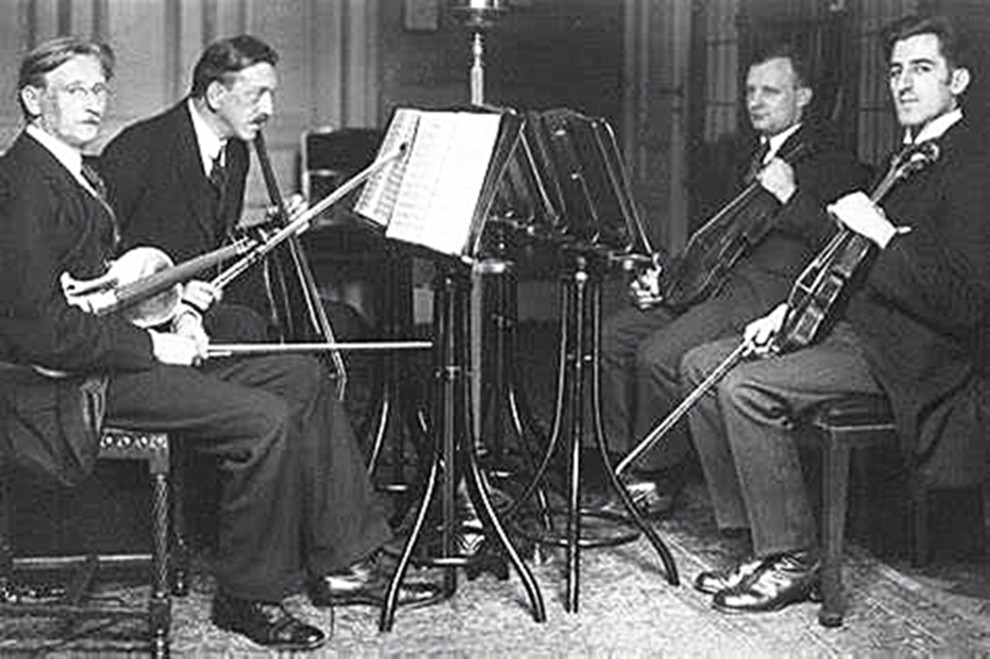 |
|
| |
1915年冬天,亨德米斯成为他的老师阿道夫·莱布纳的四重奏乐队的一员。他先是拉第二小提琴,然后根据自己的要求改拉中提琴。大提琴手是莫里茨·弗兰克,他曾在霍奇音乐学院教过欣德米斯的弟弟鲁道夫。这个四重奏乐团通常在法兰克福和邻近的城镇举行音乐会,在该地区获得了一定的声望。
在1919年12月的《Kolnische Zeitung》中,人们可以看到:“在音乐协会,法兰克福莱布纳四重奏(A.
Rebner Quartet, H. Kraus, P. Hindemith, M.
Frank)的绅士们是受欢迎的客人……”莱布纳四重奏在晚期的海顿四重奏(作品76,降b大调)和贝多芬的f小调四重奏(作品95…)中表现得尤为明显。1921年,“四重奏”乐队到荷兰和西班牙进行了两次大规模的巡回演出。
在莱布纳四重奏的节目中,只有很少的当代作品,包括巴托克的弦乐四重奏,尚伯格的弦乐四重奏,Op.
7和欣德米斯的第一弦乐四重奏,Op.
10。他们更喜欢演奏海顿的作品,尤其是贝多芬的作品,而莱布纳对贝多芬特别着迷。追求新领域的年轻音乐家Hindemith,很快就厌倦了这种传统的节目:“这种音乐必须被禁止五年!”他精力充沛地问道:“贝多芬对我来说太主观了。”1921年秋,亨德米斯在西班牙巡回演出时,节目编排上的分歧最终导致了他与莱布纳之间的争吵。 |
|
|
|
| |
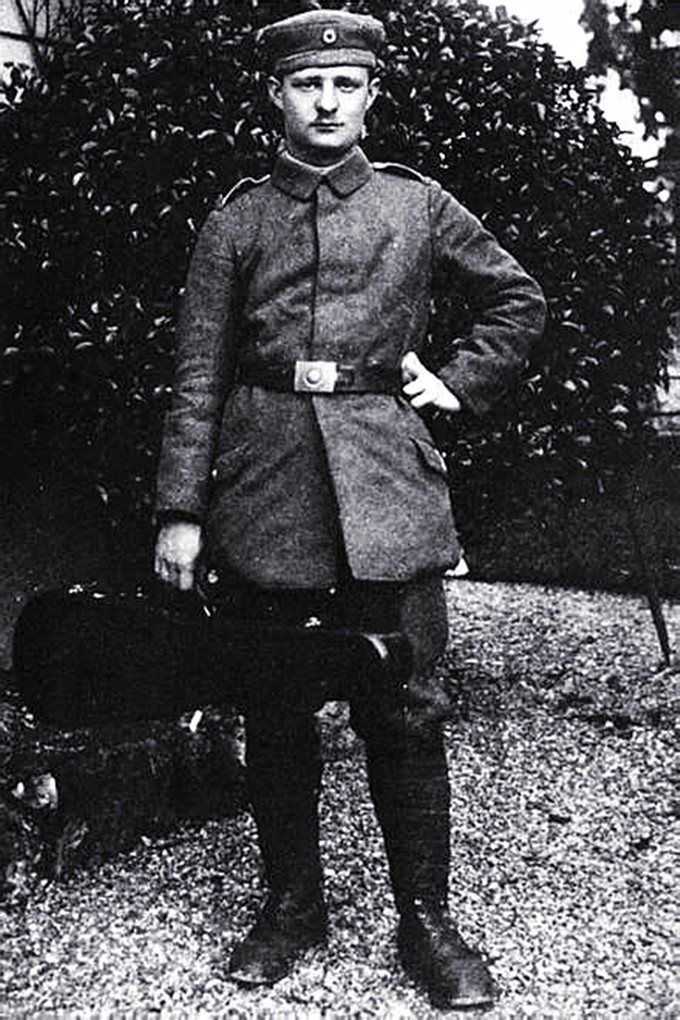 |
|
|
|
| |
一身戎装拿着小提琴的欣德米特(Paul
Hindemith) |
|
|
|
| |
Today In
the winter of 1915 Hindemith became a member of the quartet of
his teacher, Adolf Rebner. He first played second violin and
then changed - at his own request - to the viola. The cellist
was Maurits Frank, who had taught Hindemith's brother Rudolf at
Hoch's Conservatory. The Quartet usually performed its concerts
in Frankfurt and neighbouring towns, acquiring a certain
prestige in the region.
In the «Kölnische Zeitung» of December 1919 one could read: «At
the Musical Society, the gentlemen of the Frankfurt Rebner
Quartet (A. Rebner, H. Kraus, P. Hindemith, M. Frank) were
welcome guests [...]. The splendid musical and sonorous merits
of the Rebner Quartet were particularly apparent in a late Haydn
Quartet, Op. 76 in B-flat major and in Beethoven's F-minor
Quartet, Op. 95 [...].» Two extensive tours took the Quartet to
Holland and Spain in 1921.
There were only rarely contemporary compositions on the
programmes of the Rebner Quartet, these few including string
quartets by Bartok, Schönberg's String Quartet, Op. 7 and
Hindemith's 1st String Quartet, Op. 10. They preferred to play
Haydn and especially Beethoven, to whom Rebner was particularly
devoted. Hindemith, the young musician in pursuit of new
frontiers, soon tired of such conventional programmes: «This
music would have to be prohibited for five years!» he
energetically demanded, «Beethoven is too subjective for me.»
Disagreements over programming finally led to a row with Rebner
during the Spanish tour in autumn 1921, and Hindemith left the
Quartet. |
|
|
|
| |
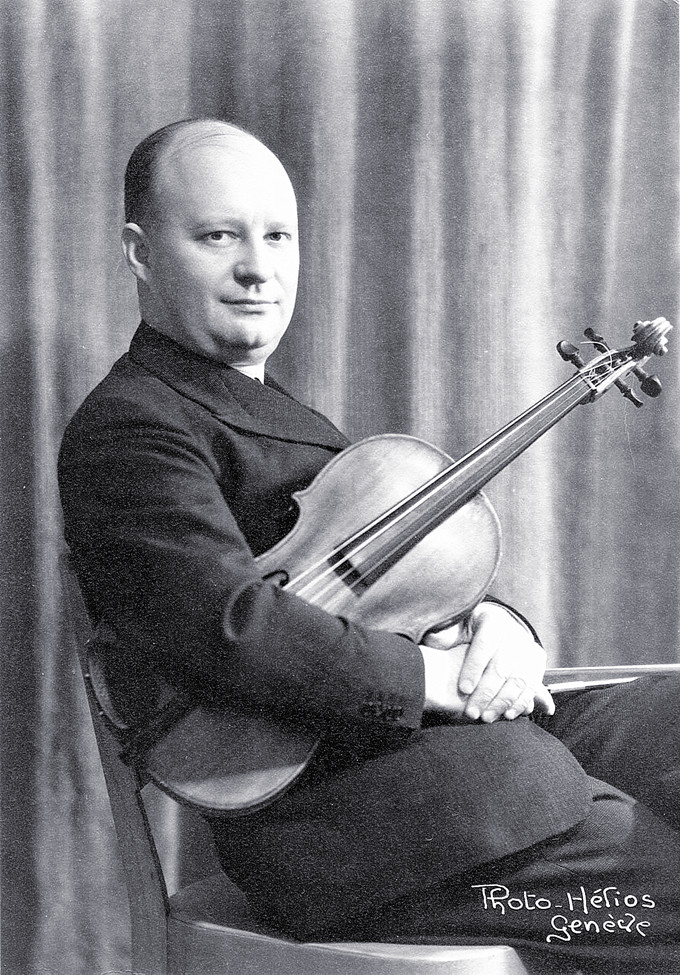 |
|
|
|
| |
保罗·欣德米特(Paul Hindemith ) |
|
|
|
| |
Today in the
history of music
On April 30, 1940, Paul Hindemith, whose work was banned in Germany for
"decadence" and "cultural Bolshevism," took up a faculty position at
Yale.
German composer, conductor and viola player Paul hindemeter was born on
November 6, 1895, in dequanhano, to a family of handcraft owners.He
began formal study of music at the age of nine.At fourteen, he entered
the Frankfurt conservatory of music, where he studied composition with
a. Mendelssohn and b. sickles.He was a violinist and viola player.In
1915 he was appointed bandmaster of the Frankfurt opera.He was drafted
into the army in 1917-18.Since 1921, the creation of the first works,
composer and viola known in Germany.In l923, he was promoted to
conductor, and at the same time founded the amal quartet, which
introduced modern music and served as a viola player.Since 1927, he has
been the senior class professor of composition at the Berlin national
conservatory of music.When the nazis were in power, they resigned
because they were dissatisfied with the regime.Between 1935 and 1937, he
was hired by the Turkish government to Ankara to organize Turkish
musical life and improve Turkish music.During the Nazi rule, his works
were banned in Germany.He traveled to the United States three times from
1937 to 1939, and settled in the United States in April 1940. Later, he
became an American citizen and taught at Yale university.There were also
some Tours in the United States.He returned to his homeland in 1947.In
1951 he received the Bach prize from the city of hansa.L951 to
Switzerland, was appointed a full professor of the university of
Zurich.After 1956, he focused on conducting bands.He died at
mein-in-frankfort, Frankfurt am main, on 28 February 1963.
Hindmeet has been regarded as one of the important representatives of
modern music since his youth.Beginning in the 1920s, the talented
composer became so well known in Germany that he soon became the man of
the European music scene.His teachers were all late romantic composers,
but he was deeply influenced by the music of Debussy and reggel, which
was evident in his early and late works.With the music innovation after
the first world war, hindmeet's creation has a strong neoclassical
tendency.He tried to mix Bach's or older musical features with modern
styles to resist the late romantic impulses that were still traditional
at the turn of the 20th century.Although he deviated from the
traditional major and minor tones, he did not tend to be atonal and
12-tone system, but systematically developed a logical new counterpoint
method, advocating "linear counterpoint".This new counterpoint method is
characterized by the emphasis on the texture of counterpoint, the
emphasis on the independent interweaving of melody, and the restoration
of diatonic scale without being restricted by harmony.In this
counterpoint the harmony ceases to function, and the result is the
coincidence of one note to another, that is to say, it is not harmony at
all, and neither harmony nor dissonance is considered.Mr. Hindemith used
these techniques in his four concertos and piano etudes, among others,
and later in his book 'the technique of composition' (Unterweisungin
tonsatz).He also praised "practical music", declaring that "the amateur
is always in the mind" when composing, and emphasizing the practical
purpose of music.
He composed many chamber music works, such as the violin for gulls
concerto for violin and piano, sonata for violin and piano, sonata for
viola, sonata for cello, sonata for cello, sonata for cello and piano,
string quartet;Concerto for piano, violin, viola and cello, as well as
several operas, such as the painter Matisse (a symphony with three
movements of the same name), harmony of the world, etc.Orchestral
"variations on weber theme", "theme and four variations", "symphony
serenade", "symphony in E flat major", and dance dramas "noble phantom",
"st. Francis", etc.An oratorio, "eternity";A requiem for "those we
love";A collection of songs "the life of maria" and a few piano songs.A
set of twelve fugue pieces for the piano, linked by free lyrical and
dance forms with prelude and epilogue, is a typical dissonant
"modernist" work, which USES a lot of sophisticated techniques.His works
are full of the vitality of the spirit of adventure, full of humor,
varied techniques, extraordinary excellence, showing profound, exquisite
skills, into their own strong passion.His musical creativity is
reminiscent of Bach, Handel, and reiger;He can play not only the violin
and viola, but also the piano, clarinet and saxophone, and has a certain
degree of proficiency in almost all band instruments.In addition, he has
published a number of theoretical books, such as "the technique of
composition" (volume 2), "tradition and acoustics" and other works.In
his later works (including revisions of his earlier ones), it was clear
that he had distanced himself from the most modern musical tendencies,
and that his orchestra had turned to Haydn, bruckner, and reggae.His
outspoken opposition to the schoenberg and webborn schools made him a
bit of an old-fashioned, anachronistic figure in his later years.
But there is no doubt that since the 1920s, a group of musicians
represented by hindmeet has formed an influential genre in western
modern music -- neoclassicism, and hindmeet himself has become a
veritable neoclassical composer.It was hindemeter who made the
neoclassical style possible within the confines of German music, but he
was self-contained, less of stravinsky's capricious nature and more
serious and sober.
Video of the day: 1. Arabella stambach playing the hindemeter violin
concerto; 2.2. Julia fisher performs the third movement of Paul
hindmeter's violin sonata in G minor.
|
|
|
|
| |
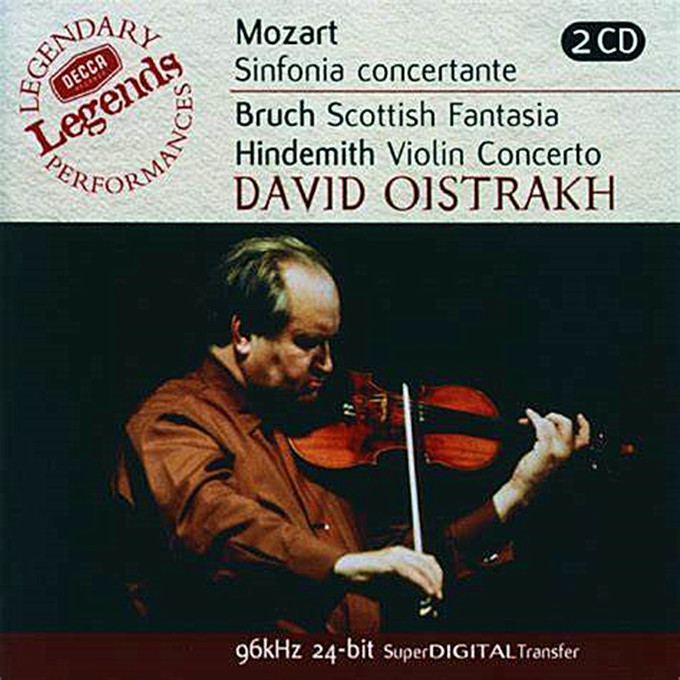 |
|
|
|
| |
大卫·奥伊斯特拉赫演奏欣德米特小提琴协奏曲的唱片封面 |
|
|
|
| |
|
|
|
|
| |
奥伊斯特拉赫
欣德米特小提琴协奏曲 Oistrakh-Violin, Hindemith Violin Concerto
|
|
|
|
| |
Oistrakh-Violin, Hindemith Violin Concerto Massig Bewegte
Halbe Langsam Lebhaft |
|
|
|
| |
保罗·欣德米特小提琴协奏曲介绍 |
|
|
|
| |
当代或任何一个时代的作曲家中几乎没有几位能像保罗·欣德米特那样拥有结实而实在的音乐基础。在他十三岁的时候他已经是一位很有造诣的小提琴家了。作为演奏家他有着广泛的经历,曾经在舞厅,剧院、电影院(为当时的无声电影配音)拉小提琴,后来在法兰克福歌剧院的乐队任提琴手,并被提升为乐队首席。之后他放弃了小提琴,改为中提琴演奏,并因此而成为著名的中提琴演奏家。他在爱玛尔(Amar)四重奏团担任中提琴手多年,并且还是欣德米特三重奏团的创始人,他自己担任中提琴,另外两位成员是小提琴家西蒙·戈尔德贝格(Szymon
Golctbvrg)和已故大提琴家马努埃尔·弗尔曼(Em anuel Feuermann)。
但是更确切地说,欣德米特是一位非常全面的音乐家,因为他认定音乐要通过实践的手段来表达,所以他仔细地研究了所有重要乐器的特点、性能和潜力。一位评论家甚至夸张地这样说:
“即使在紧急的情况下,他演奏起自己的作最也绝不会感到不自在。”
欣德米特受到勃拉姆斯(Brahms)和雷格尔(Reger)传统音乐的培育。他早期创作的一些作品,其色彩受到瓦格纳(Vagner)和理查德·施特劳斯(Richard.Strauss)以及法国印象派作家的影响。后来,为了取得表达方式的更大的自由,他在一个短时期内采纳了勋伯格(Arnold
SchOnberg)新的学说。可是欣德米特是一位非常实际的音乐家,所以他一直坚持将他的音乐与广大的听众紧密结合。结果,他终于发展了一种讲究实际效果的音乐型式妻他称它为“实用音乐(Gebrauchs
musik)——英国的音乐理论家埃里克·布洛姆(Eric Blom)将它译成“日常的音乐”
近年来,欣德米特的音乐带有更园润,柔和的性质,它已经使他的音乐与普通的听众更为接近。他也没有忽视标准的音乐形式——尤其是协奏曲,当他在创作这种乐曲时,一般已经在思想中清楚地肯定了一次音乐会的情景,或者一位独奏家的形象。
欣德米特创作他的小提琴协奏曲是在1939年,它有三个乐章多分别标明:,激动的中速,二分音符为基础节拍(Massing bewegte
Halbe),缓慢的(Langsam)和充满活力的、快速的(Lenaft).使用的乐器除独奏小提琴外,还有两支长笛,一支短笛,两支双簧管,两支单簧管和一支低音单簧管、两支大管、四个法国号、两个小号、三个长号、一个大号,定音鼓,低音鼓,小军鼓,钗,三角铁、铃鼓,锣,再加上通常的弦乐各声部。
这部协奏曲首次问世于1940年3月19日,在波士顿交响乐团(Boston Symphony
Orchestra)举行的一次音乐会上演出,谢尔盖·库什维茨基(Serge
Koussevitzky)担任指挥,乐队的首席理查德。比尔金(Richard Burgin)担任小提琴独奏者。
|
|
|
|
| |
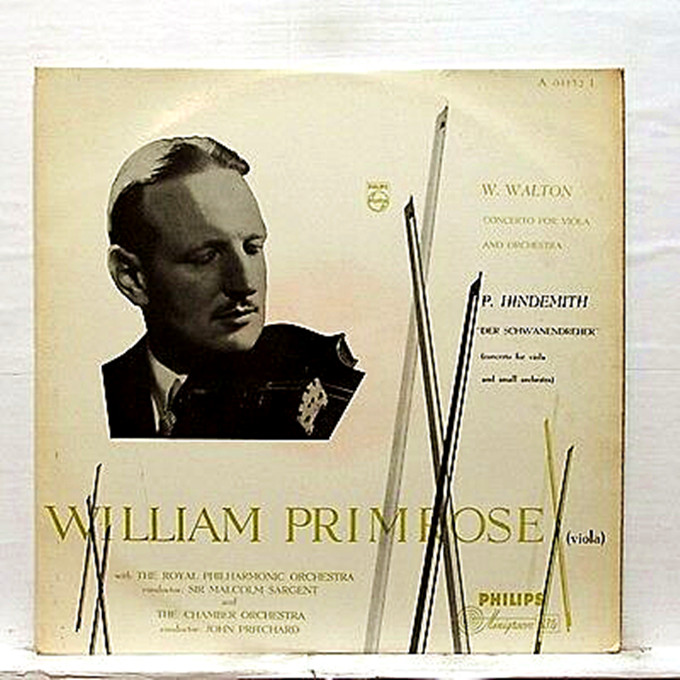 |
|
|
|
| |
威廉·普利姆罗斯演奏欣德米特中提琴协奏曲唱片封面 |
|
|
|
| |
There are few
composers of our time, or of any era, like Paul.Hindmeet has a solid and
solid musical foundation.By the time he was thirteen he was already an
accomplished violinist.He had a wide range of experiences as a virtuoso,
playing the violin in dance halls, theatres and cinemas (as the voice of
the silent films of the day), and later as a violinist in the orchestra
of the Frankfurt opera, where he was promoted to the head of the
orchestra.He then gave up the violin to play the viola, for which he
became a famous viola player.He played the viola for many years in the
Amar quartet and was the founder of the Szymon Golctbvrg trio, himself a
viola player, along with the violinist Szymon Golctbvrg and the late
cellist Em anuel Feuermann.
But it is more accurate to say that hindmeet was a very thorough
musician, because he believed that music should be expressed by means of
practice, so he carefully studied the characteristics, performance and
potential of all the important instruments.One critic even went so far
as to exaggerate: "he never felt uncomfortable playing his work, even in
an emergency."
Hindmeet was nurtured by the traditional music of Brahms and Reger.Some
of his early works were influenced by the colors of Vagner and Richard.
Strauss, as well as the French impressionist writers.Later, in order to
achieve greater freedom of expression, he adopted Arnold SchOnberg's new
doctrine in a short period of time.Hindmeet, however, was a very
practical musician, so he insisted on keeping his music close to a large
audience.As a result, he eventually developed a practical style of music
that he called Gebrauchs musik, which the English musicologist Eric Blom
translated into "everyday music."
In recent years hindmeet's music has taken on a more mellow and mellow
character, and it has brought his music closer to the average
listener.Nor did he neglect the standard musical forms-especially the
concerto, in which he had clearly identified in his mind the scene of a
concert or the image of a soloist.
Hindmeter wrote his violin concerto in 1939. It has three movements,
most of them marked:, the excited medium, the basis of the half note
beat (Massing bewegte Halbe), slow (Langsam) and a dynamic and fast
(Lenaft). Use of Musical Instruments in addition to the solo violin,
there are two flutes, a piccolo, two oboe, clarinet and two a bass
clarinet, two bull, four three two French horn, trumpet, trombone, a
large, timpani, bass drum, snare drum, earth, Angle iron, tambourine,
gong, plus the usual string of each parts.
The concerto was first performed on March 19, 1940, at a concert of the
Boston Symphony Orchestra, conducted by Serge Koussevitzky and headed by
Richard.Richard Burgin is a violin soloist.
|
|
|
|
| |
|
|
|
|
| |
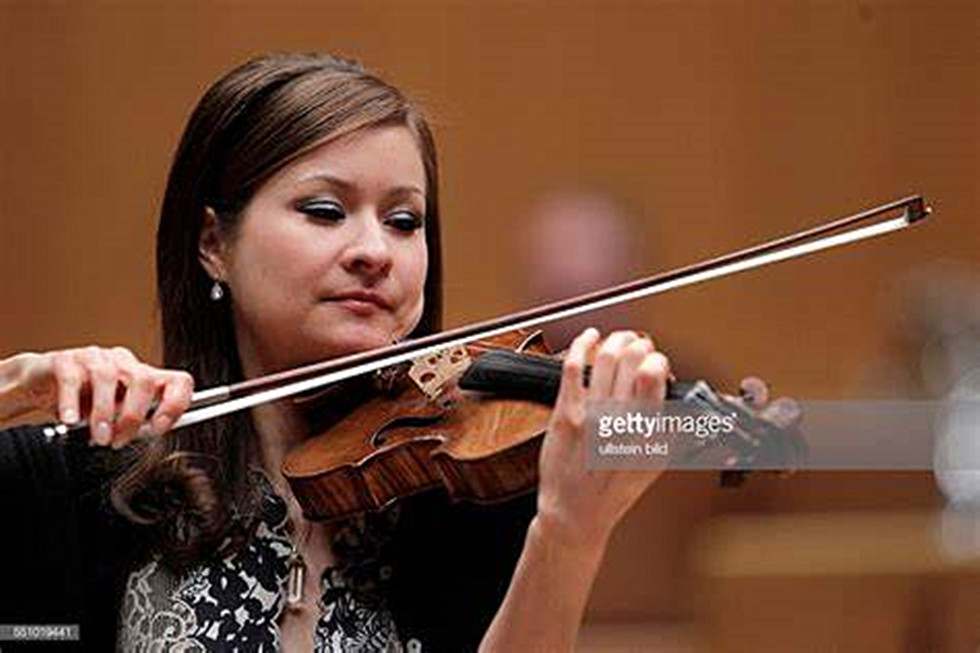 |
|
| |
阿拉贝拉·史丹巴克 (Arabella
Steinbacher)在演奏 |
|
|
|
| |
德日混血女小提琴家阿拉贝拉·史丹巴克
(Arabella Steinbacher)1981年11月14日生于德国慕尼黑。
史丹巴克的母亲是一位留学德国的日本歌唱家,爸爸也是从事歌剧声乐。史丹巴克三岁开始学琴,九岁进入慕尼黑音乐学院。史丹巴克曾跟随多位名师学习,包括当今最杰出的小提琴教师多罗西·迪蕾(Dorothy
DeLay)等。她还获得安娜·穆特(AnneMutter)的奖学金。比她年长18岁的穆特对她也非常爱护和支持,还送了她一把前名家用过的琴弓。
史丹巴克成名前主要演奏室乐。一次偶然的机会命运之神眷顾了她。2004年在巴黎一个音乐会上,她临时顶替一位年长同事登台表演,却被惊为天人,自始走上独奏的舞台。
史丹巴克有着德国音乐家那种深遂精算的音乐感,并拥有高雅的气质和大方得体的台风,表情平和,身体语言稳重。 |
|
|
|
| |
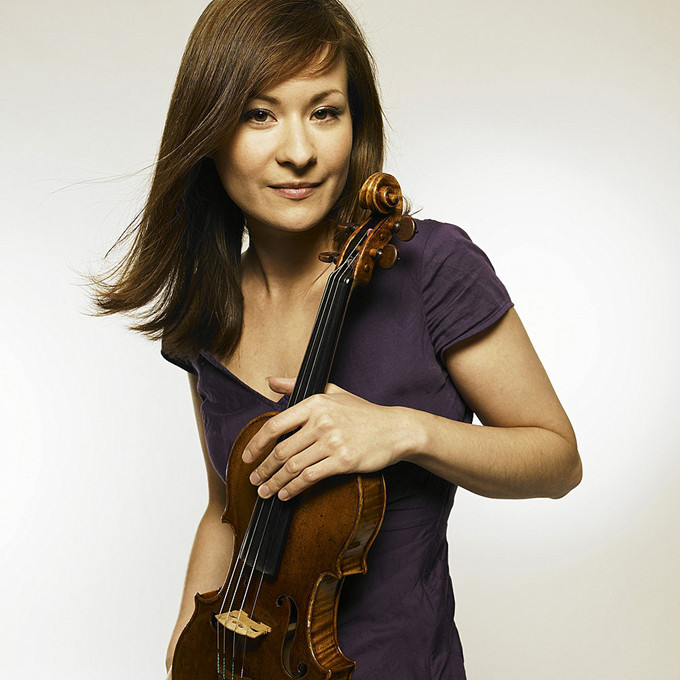 |
|
|
|
| |
阿拉贝拉·史丹巴克 (Arabella
Steinbacher) |
|
|
|
| |
Arabella
Steinbacher, a german-japanese female violinist, was born on November
14, 1981, in Munich, Germany.
His mother was a Japanese singer studying in Germany, and his father
was an opera singer.Stanbuck started playing the piano at the age of
three and entered the Munich conservatory of music at the age of
nine.Stambach studied with many teachers, including Dorothy DeLay, one
of today's most prominent violin teachers.She also won a scholarship to
Anna muutter.Mut, who is 18 years her senior, is also very loving and
supportive, and gave her a former master's bow.
Stanbuck played mainly chamber music before he became famous.A stroke
of fortune favoured her.At a concert in Paris in 2004, when she took the
stage in place of an elderly colleague, she was taken by surprise and
began solo.
Stanbuck has the deep actuarial musical sense of a German musician, and
has the elegant temperament and decent typhoon, the expression is calm,
the body language is stable. |
|
|
|
| |
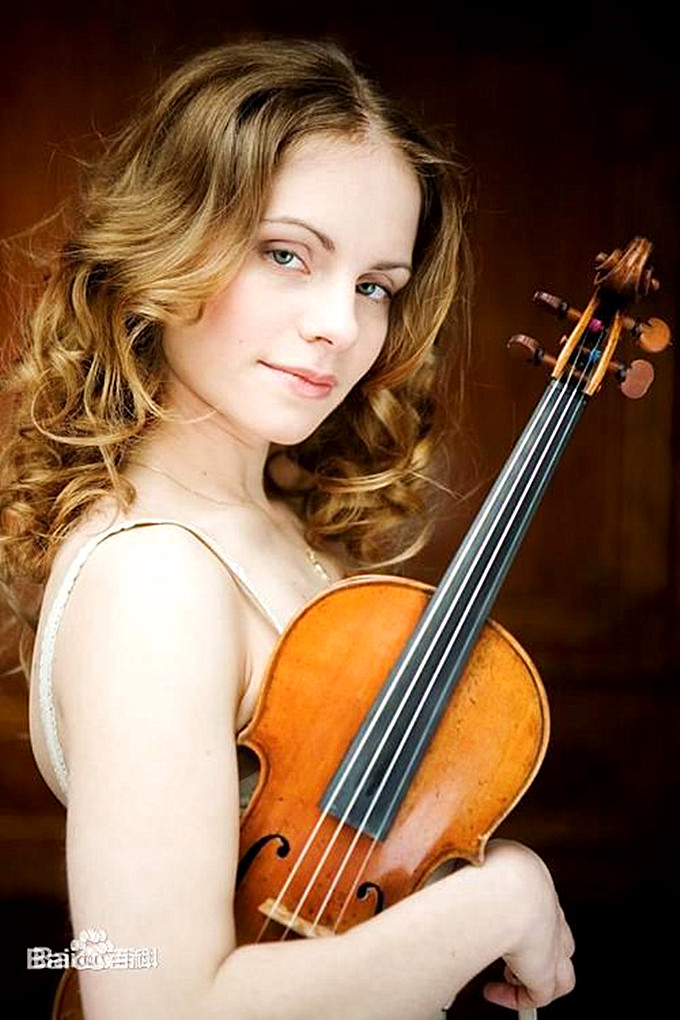 |
|
|
|
| |
朱莉娅·费舍尔(Julia Fischer)
,1983年生于德国慕尼黑。母亲维埃拉·费舍尔出生于斯洛伐克,1972年移居联邦德国,是钢琴家。父亲弗朗克-迈克尔·费舍尔是数学家,出生于东德,同年移居西德。
费舍尔曾在林肯中心、卡耐基音乐厅等知名场所演奏。曾与众多国际知名的指挥家合作,诸如洛林·马泽尔、克里斯托夫·艾森巴赫、雅科夫·克莱兹伯格、尤里·捷米尔卡诺夫、内维尔·马里纳、大卫·津曼、丹内克·马卡尔、君·麦克尔、鲁本·加扎里安、马雷克·扬诺夫斯基、赫伯特·布隆斯泰特、迈克尔·蒂尔森·托马斯等等。足迹遍布美国,巴西和日本以及绝大多数欧洲国家。
费舍尔的演奏曲目非常广泛,从维瓦尔第到肖斯塔科维奇,从巴赫到潘德列茨基,她甚至还在2008年1月1日以钢琴家的身份弹奏了爱德华·格里格a小调钢琴协奏曲
。 |
|
|
|
| |
Julia Fischer was
born in Munich, Germany, in 1983.Her mother, vieira fischer, was
born in Slovakia and moved to federal Germany in 1972. She was a
pianist.His father, frank - Michael fischer, was a mathematician
who was born in east Germany and moved to the west in the same
year.
Fisher has played at famous venues such as Lincoln Center and
Carnegie Hall.Has cooperation with many international famous
conductor, such as lorraine lorin maazel, Christopher
eschenbach, yakov klein sulzberger, yuri jie mirka panov,
neville marriner, David mann, tianjin, Dan's markal, prince
Michael, reuben garza, marek young's base, Herbert bloomberg
Tate, Michael tilson Thomas, etc.It has spread to the United
States, Brazil and Japan and most European countries.
Fischer's repertoire ranges from vivaldi to shostakovich, Bach
to penderetsky, and she even played the edouard grieg piano
concerto in a minor as a pianist on Jan. 1, 2008. |
|
|
|
| |
|
|
|
|
| |
朱莉娅·费舍尔(Julia Fischer)演奏——保罗·欣德米特《G小调小提琴奏鸣曲》第三乐章 |
|
|
|
| |
| |
Julia
Fischer -- movement 3 of Paul hindmeter's violin sonata in G
minor |
|
|
|
|
|
| |
|
|
|
|
| |
未得原作者编者授权严禁转载www.mt77.com任何内容 |
|
|
|
|
|
|
|
|
|
|
|
|
|
|


